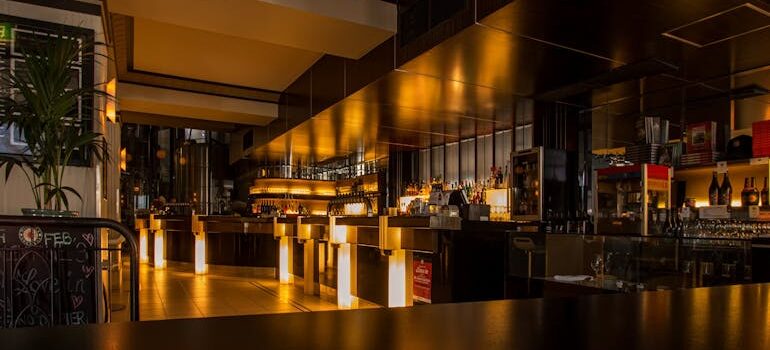Relocating a restaurant can be stressful and risky if not planned properly. It’s not just about packing and moving—it affects your staff, regular customers, and daily income. That’s why it’s important to know how to relocate a restaurant without losing business. You need to organize every part of the process with care. From finding the right space to marketing your reopening, every step matters. For example, if you don’t tell customers in advance, you could lose regulars. If the move delays your reopening, you lose income. Work with trusted moving companies Bay Area to speed things up. This guide explains how to move without hurting your bottom line. Whether you run a small café or a high-end spot, following these tips will help you keep your reputation and revenue during the move. Let’s look at how to handle each stage the right way.
Start Early And Set A Step-By-Step Moving Timeline
If you want to relocate a restaurant without losing business, you must start early—ideally three to six months before your move date. First, write down each step in your timeline. For example, include things like finding a new space, transferring utilities, applying for permits, and informing your team. Use a calendar or task-tracking app to keep everything on schedule. Talk to your suppliers and check how long it will take to set up the kitchen again. Don’t forget about cleaning the old space and getting the deposit back. Give yourself extra time in case anything takes longer than expected. Rushing leads to mistakes and service delays. Include buffer days for inspections or equipment repairs. If you have multiple vendors or contractors, confirm availability in advance. A well-planned timeline keeps the process organized and avoids gaps in service or lost sales.

Tell Your Staff And Customers What’s Happening
Your staff and customers need to know what’s going on from the beginning. If you wait too long to tell them, you risk confusion or even losing loyal people. First, hold a staff meeting to explain the move. Give clear dates, job expectations, and any training that may be needed for the new location. Ask for input—they may have useful ideas. Then, start letting customers know. Put signs in your current restaurant, post on your social media pages, and update your website. Offer reminders as the move date gets closer. If possible, tell people the reasons behind the move, such as needing more space or a better location. Customers like honesty. Run a promotion for your last week at the old spot to boost business. Consider giving out flyers with your new address and opening date to keep your regulars informed.
Pick The Right New Location For Long-Term Success
Where you move matters a lot; the wrong spot can drive customers away. So, think carefully before signing a lease. Look at parking, foot traffic, nearby competition, and whether your target customers live or work in that area. For example, if you run a breakfast place, don’t move into an office park with no morning activity. Instead, look for areas with a strong morning rush. Ask local realtors about zoning and business licenses. Negotiate a lease that includes time to build out the space if needed. Talk to other businesses nearby to get insight into the area. Make sure your brand still fits the location. A modern café might do well near college campuses, but not in an upscale neighborhood. If you need extra time before opening, look into storage West Sacramento for your equipment. Good location planning helps protect your future profits.

Use Professionals That Handle Restaurant Equipment Moves
Restaurant kitchens are full of heavy and sensitive equipment.
- Stoves, fridges, dishwashers, and fryers must be handled carefully. That’s why you should hire restaurant equipment movers instead of regular moving companies.
- These specialists know how to disconnect, move, and reinstall kitchen tools without damage. They also pack everything securely to prevent dents or leaks. For example, moving a large commercial fridge requires lifting straps, padding, and careful coordination. It’s not something your regular staff should try.
- These pros also know how to work with gas and water lines safely. Make sure to book early, especially during peak seasons. Confirm that your movers are insured and have done similar jobs. Don’t forget to check reviews online.
- A reliable team reduces your downtime and helps you reopen faster. Damaged gear or delays can quickly turn into lost income, so this part of the move is critical.
Get The New Space Ready Before You Reopen
Before you unlock the doors, make sure everything inside the new space works perfectly. Start by installing all kitchen appliances and having them tested. Double-check gas connections, refrigeration, and ventilation systems. Schedule inspections early so you don’t face delays. Set up the dining area to match your original layout or improve the flow. Walk your staff through the new space and run a few mock shifts to catch any issues. Adjust lighting, music, and signage to feel welcoming. Don’t forget the health department—book your inspection on time. If you’re moving across state lines, check with domestic shipping services to move supplies fast. Keep a list of any small items you’ll need to rebuy or replace. A good setup helps avoid service issues on opening day. It also boosts staff confidence, which improves customer experience from the start.

Advertise Your Reopening And Keep Customers Engaged
Once your new space is ready, it’s time to spread the word. Create a reopening plan that builds excitement. Use social media, your website, and local news outlets to announce the new location. Offer a grand reopening deal—maybe free coffee, discounted meals, or a loyalty card bonus. Post before-and-after photos of your move. Include videos showing the new kitchen or dining space. Invite loyal customers personally or via email. Run a small soft opening to test service flow before the big day. Partner with nearby businesses to co-promote and attract foot traffic. Ask happy customers to leave reviews about the new space. Keep signs outside the old location for a few weeks to redirect people. The goal is to stay visible and give people a reason to return. These small steps will help you relocate a restaurant without losing business in the long run.
Conclusion: A Smart Way to Relocate a Restaurant Without Losing Business
It’s completely possible to relocate a restaurant without losing business if you plan ahead, communicate well, and use expert help. Every detail—from staff updates to hiring movers—affects your success. By following these steps, you can move your restaurant with less stress and more control. Don’t try to rush the process. Take the time to protect your food, equipment, and customer relationships. Use the move as an opportunity to improve your brand and reach new people. Many restaurants that move the right way end up doing better in the long run. Whether you’re relocating for more space, a better area, or a fresh look, make sure you treat it like a major business project. With the right planning and team, you’ll come out ahead. Your restaurant can grow stronger—just make every move count.


